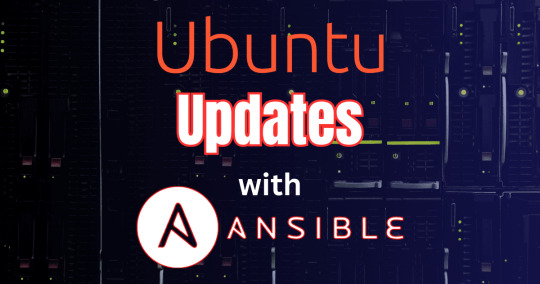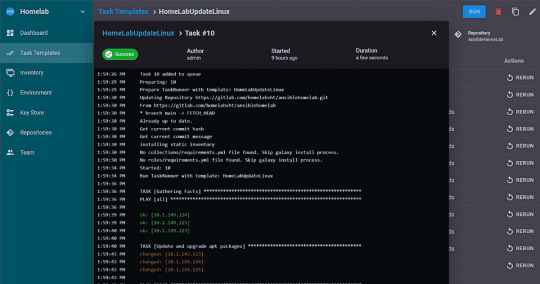#AnsibleAutomation
Explore tagged Tumblr posts
Text
As organizations look to modernize infrastructure and migrate legacy virtual machines (VMs) to container-native environments, Red Hat OpenShift Virtualization emerges as a powerful solution. A crucial step in this migration journey is configuring and managing storage for virtual machines effectively — especially when orchestrated through Ansible Automation Platform.
Why Storage Configuration Matters in VM Migration
Virtual machines, unlike containers, are tightly coupled with persistent storage:
VM disks can be large, stateful, and performance-sensitive.
Improper storage configuration can result in data loss, slow I/O, or failed migrations.
OpenShift Virtualization relies on Persistent Volume Claims (PVCs) and StorageClasses to attach virtual disks to VMs.
🎯 Key Objectives of Storage Configuration
Ensure Data Integrity – Retain disk states and OS configurations during migration.
Optimize Performance – Choose appropriate backends (e.g., block storage for performance).
Enable Automation – Use Ansible playbooks to consistently define and apply storage configurations.
Support Scalability – Configure dynamic provisioning to meet demand elastically.
🔑 Types of Storage in OpenShift Virtualization
Persistent Volumes (PVs) and Claims (PVCs):
Each VM disk maps to a PVC.
StorageClass defines how and where the volume is provisioned.
DataVolumes (via Containerized Data Importer - CDI):
Automates disk image import (e.g., from an HTTP server or PVC).
Enables VM creation from existing disk snapshots.
StorageClasses:
Abstracts the underlying storage provider (e.g., ODF, Ceph, NFS, iSCSI).
Allows admins to define performance and replication policies.
How Ansible Automates Storage Setup
The Ansible Automation Platform integrates with OpenShift Virtualization to:
Define VM templates with storage requirements.
Automate DataVolume creation.
Configure PVCs and attach to virtual machines.
Manage backup/restore of volumes.
This reduces human error, accelerates migration, and ensures consistency across environments.
✅ Best Practices
Pre-Migration Assessment:
Identify VM disk sizes, performance needs, and existing formats (QCOW2, VMDK, etc.).
Use Templates with Embedded Storage Policies:
Define VM templates that include PVC sizes and storage classes.
Enable Dynamic Provisioning:
Choose storage backends that support automated provisioning.
Monitor I/O Performance:
Use metrics to evaluate storage responsiveness post-migration.
Secure Storage with Access Controls:
Define security contexts and role-based access for sensitive VM disks.
🚀 Final Thoughts
Migrating virtual machines to Red Hat OpenShift Virtualization is not just a lift-and-shift task—it’s an opportunity to modernize how storage is managed. Leveraging the Ansible Automation Platform, you can configure, provision, and attach storage with precision and repeatability.
By adopting a thoughtful, automated approach to storage configuration, organizations can ensure a smooth, scalable, and secure migration process — laying the foundation for hybrid cloud success.
For more info, Kindly follow: Hawkstack Technologies
#OpenShiftVirtualization#RedHatOpenShift#AnsibleAutomation#VMMigration#HybridCloud#PersistentStorage#CloudInfrastructure#OpenSourceTech#DevOpsAutomation#ITModernization#KubeVirt#DataVolumes#StorageManagement#RHCE#InfrastructureAsCode
0 notes
Text
Real-World Applications of RHCSA and RHCE Skills
The Red Hat Certified System Administrator (RHCSA) and Red Hat Certified Engineer (RHCE) certifications are highly regarded in the IT industry. These certifications validate an individual's skills in managing and automating Red Hat Enterprise Linux environments. However, the value of these certifications extends beyond just passing exams; the skills acquired are directly applicable to various real-world scenarios in the IT domain. Let's explore some of the practical applications of RHCSA and RHCE skills.
1. Server Management and Maintenance
RHCSA:
User and Group Management: Creating, modifying, and managing user accounts and groups. This is crucial for maintaining security and organization within a server environment.
File Permissions and ACLs: Setting appropriate permissions and access control lists to protect sensitive data and ensure users have the necessary access to perform their jobs.
Service Management: Starting, stopping, enabling, and disabling services using systemctl. This is essential for maintaining the uptime and performance of services.
RHCE:
Advanced System Monitoring: Using tools like top, htop, vmstat, and iotop to monitor system performance and diagnose issues.
Network Management: Configuring and troubleshooting network interfaces, firewalls, and SELinux settings to secure and optimize network communications.
2. Automating System Administration Tasks
RHCSA:
Shell Scripting: Writing basic scripts to automate repetitive tasks, such as backups, user creation, and log rotation.
Cron Jobs: Scheduling routine tasks to run automatically at specified times, ensuring consistent system maintenance without manual intervention.
RHCE:
Ansible Automation: Utilizing Ansible for configuration management and automation. Creating playbooks to automate complex multi-tier deployments and configurations.
Automating Deployments: Streamlining the process of deploying applications and services using automated scripts and configuration management tools.
3. System Security and Compliance
RHCSA:
Security Enhancements: Implementing basic security measures such as configuring firewalls with firewalld, and managing SELinux to enforce security policies.
Auditing and Logging: Setting up and maintaining system logs to monitor and audit system activities for compliance and troubleshooting purposes.
RHCE:
Advanced Security Configurations: Applying more sophisticated security measures such as configuring advanced SELinux policies, managing TLS/SSL certificates for secure communications, and implementing secure SSH practices.
System Auditing and Reporting: Using tools like auditd to create detailed security audits and reports, ensuring systems comply with security policies and standards.
4. Troubleshooting and Problem Solving
RHCSA:
Basic Troubleshooting: Using commands like journalctl, dmesg, and systemctl to diagnose and resolve common issues related to system performance, boot processes, and service failures.
Disk Management: Managing storage with LVM (Logical Volume Management) and understanding disk usage with tools like df and du.
RHCE:
Advanced Troubleshooting: Diagnosing complex issues involving network services, storage systems, and application performance. Using advanced tools and techniques to pinpoint and resolve problems.
System Recovery: Implementing disaster recovery plans, including restoring from backups, repairing boot issues, and recovering corrupted file systems.
5. Managing Enterprise Environments
RHCSA:
Package Management: Installing, updating, and managing software packages using yum or dnf, ensuring that systems have the necessary software and updates.
Network Configuration: Setting up and managing basic network configurations, including IP addresses, DNS settings, and hostname configurations.
RHCE:
Centralized Authentication: Setting up and managing centralized authentication services such as LDAP, Kerberos, and integrating with Active Directory.
Clustering and High Availability: Configuring and managing Red Hat High Availability Clustering to ensure critical services are always available.
6. DevOps and Continuous Integration/Continuous Deployment (CI/CD)
RHCSA:
Version Control Systems: Basic knowledge of version control systems like Git, which is fundamental for managing code and configuration files.
Containerization: Introduction to containerization concepts using tools like Docker.
RHCE:
CI/CD Pipelines: Setting up and managing CI/CD pipelines using tools like Jenkins, GitLab CI, or Red Hat OpenShift, enabling automated testing, integration, and deployment of applications.
Advanced Container Management: Managing and orchestrating containers using Kubernetes and Red Hat OpenShift, ensuring scalable and reliable deployment of containerized applications.
Conclusion
The skills acquired through RHCSA and RHCE certifications are not just theoretical but have direct, practical applications in the real world. Whether it's managing and securing servers, automating administrative tasks, or setting up robust enterprise environments, these certifications equip IT professionals with the knowledge and tools necessary to excel in their careers. By applying these skills, professionals can ensure efficient, secure, and high-performing IT operations, ultimately driving organizational success.
For more details click www.qcsdclabs.com
#redhatcourses#information technology#containerorchestration#kubernetes#docker#linux#container#qcsdclabs#rhcsa#rhce#devops#ansibleautomation
1 note
·
View note
Text

Revolutionize Your IT Infrastructure: Master Advanced Automation with Red Hat's DO374 Ansible Course
#AmritaTechnologies #amrita #do374course #do374 #AnsibleAutomation #RHLS #rhls #redhatlearningsubcriptions #RHCSA #redhatsystemadministration #rhcsa #LinuxMastery #RH294 #LinuxAutomation #linuxautomationansible #do374course #OpenSourceJourney #DO374Empowers #MasterTheFuture #RHCSA #rhcsa #redhatsystemadministrator #redhatsystemadministration
0 notes
Text
How to Update Ubuntu with Ansible
How to Update Ubuntu with Ansible #vmwarecommunities #vexpert #devops #ansible #ansibleautomation #automatedupdates #updateubuntu #ubuntuupdates #virtualizationhowto #vhtforums #homelab #homeserver #configurationmanagement #infrastructureascode
One of the best ways to handle updating your Linux boxes is using automation. Using some type of automation for updates is a great way to make sure these get applied in a consistent way and regularly. If you are running multiple Ubuntu servers, automating updates with Ansible is a great way to install the latest version of updates on your remote server environments and update packages installed.…

View On WordPress
0 notes
Link
0 notes
Photo

New Mug! And some stickers for the office. Ansible Automates! #devops #cloud #redhat #linux #ansible #dev #bogota #colombia #developer #developers #development #developerlife #devopsdays #ansibleautomates (at Hall 74 Centro de Eventos) https://www.instagram.com/p/Bzs5tnFnJte/?igshid=47lx7qn4hqbg
#devops#cloud#redhat#linux#ansible#dev#bogota#colombia#developer#developers#development#developerlife#devopsdays#ansibleautomates
1 note
·
View note
Text

Register here to join him: https://lnkd.in/dumUxaf5 Shubham Katara is going to share some extra thoughts and insights on Kubernetes!☸️ Don't miss his masterclass. It's not only about learning! it's about developing your career path!✨ Register now!! it's on 12th November at 10 AM🕙
#kubernetescluster#kubernetessecurity#kubernetesmanagement#ansible#ansibleautomates#ansiblefest#automation#automationsolutions#clusters#containers#containerization#mumbaijobs#hyderabadjobs#bengalurujobs#job#beginners#freshers#technical#technologysolutions
0 notes
Photo

Amsterdam, you were amazing. Even though it was a short little visit, it was the best. The event was great, the people were great, the food was great. Until next time my friends! #ansibleautomates (at Amsterdam Centraal)
0 notes
Photo

Amrita Technologies is one in all best RedHat AnsibleAutomation DO407 Training in Hyderabad employment institutions in Republic of Republic of India that provides courses in Network Solutions to students. we provide comprehensive employment in high end certification programs like Redhat Linux system, Ansible,DevOps ,OpenShift etc. Our quality standards ar terribly high which we have a tendency to use proven technology processes that ar credible and last at constant time for additional www.amritahyd.org
0 notes
Text
RT @akira6592: Day2 で、ネットワーク自動化のお話をさせていただきます。よろしくおねがいします。 https://t.co/CwRIjCiHTH #ansibleautomates
Day2 で、ネットワーク自動化のお話をさせていただきます。よろしくおねがいします。https://t.co/CwRIjCiHTH#ansibleautomates
— よこち(yokochi) (@akira6592) June 16, 2020
via Twitter https://twitter.com/suwa_sh June 17, 2020 at 03:05AM
0 notes
Text
In today’s dynamic IT landscape, automation plays a critical role in improving operational efficiency and reducing manual errors. Red Hat Enterprise Linux (RHEL), combined with Ansible Automation, offers a powerful platform for simplifying system administration tasks. One of the key components that enhances the flexibility and reliability of Ansible automation is task control.
This blog explores how implementing task control in RHEL automation with Ansible can lead to smarter, more adaptive, and more resilient automation workflows.
What is Task Control in Ansible?
Task control refers to the set of features in Ansible that allow automation workflows to respond intelligently to different conditions, outcomes, and scenarios during execution. Instead of blindly executing tasks in sequence, task control allows you to:
Run tasks only under specific conditions
Skip or continue tasks based on outcomes
Handle errors gracefully
Customize how success or failure is determined
Group tasks and define recovery or cleanup actions
These capabilities make your playbooks more robust and production-ready.
Key Benefits of Task Control
1. Conditional Task Execution
Not every task is relevant in every environment. Task control allows you to set conditions under which certain tasks should run. This ensures that the automation adapts to different operating systems, configurations, or infrastructure states.
2. Custom Error Handling
In traditional scripts, one failed step can halt the entire process. With Ansible, you can define what constitutes a failure, and even instruct the system to continue despite certain errors. This is particularly useful in real-world scenarios where environments may differ or where cleanup steps need to run regardless of earlier outcomes.
3. Improved Reliability
By grouping tasks and managing how failures are handled, Ansible enables the creation of workflows that are not only automated but also resilient. Whether you're installing a service, configuring a system, or deploying a container platform, task control ensures consistency and reliability.
4. Enhanced Auditability and Logging
Task control also makes automation more transparent. You can design your playbooks to log critical steps, track outcomes, and generate useful feedback during execution — all of which support compliance and troubleshooting efforts.
Why It Matters in Enterprise Environments
In enterprise IT operations, automation must be flexible enough to accommodate exceptions and diverse infrastructure. With task control:
DevOps teams reduce the risk of errors and service downtime
IT administrators gain more control and confidence in their scripts
Organizations can scale automation without sacrificing precision or compliance
Recovery and rollback processes can be built directly into automation workflows
Conclusion
Implementing task control in Red Hat Enterprise Linux Automation with Ansible is a game-changer for teams looking to move beyond basic scripting. It adds intelligence, stability, and adaptability to your automation framework — key ingredients for successful enterprise IT operations.
At Hawkstack Technologies, we help organizations leverage the full potential of Ansible and Red Hat technologies through tailored training and consulting. If you're ready to take your automation to the next level, get in touch with our experts.
Explore More. Automate Smarter. Partner with Hawkstack.
👉 www.hawkstack.com
#RedHat#AnsibleAutomation#RHEL#LinuxAdministration#TaskControl#EnterpriseAutomation#InfrastructureAsCode#CloudAutomation#AutomationWithAnsible#DevOps#DigitalTransformation#ITConsulting#HawkstackTechnologies#OpenSourceSolutions
0 notes
Text
Unleashing the Power of Automation with Red Hat Ansible: A Game-Changer for IT Operations
In today's dynamic digital landscape, where agility and efficiency are paramount, the role of automation in IT operations cannot be overstated. Red Hat Ansible emerges as a transformative force, revolutionizing traditional IT management paradigms and ushering in an era of unprecedented efficiency and innovation.
In this article, we delve into the profound impact of Red Hat Ansible on IT operations, illuminating its role as a game-changer in modern infrastructure management. From simplifying complex workflows to accelerating delivery cycles, Ansible's simplicity and versatility empower organizations to navigate the complexities of modern IT environments with ease.
Our exploration extends beyond the technical capabilities of Ansible to its broader implications for organizational agility and competitiveness. We showcase real-world success stories of enterprises leveraging Ansible to drive digital transformation, enhance operational efficiency, and stay ahead of the curve in an increasingly competitive market landscape.
Furthermore, we delve into the security and compliance aspects of Ansible, highlighting its robust security features and built-in governance mechanisms that ensure automation initiatives remain steadfastly aligned with organizational security protocols.
Through this article, we aim to offer readers practical insights, expert guidance, and best practices for harnessing the full potential of Red Hat Ansible. Our goal is to empower IT professionals and decision-makers with the knowledge and tools they need to embark on their automation journey confidently.
We believe that "Unleashing the Power of Automation with Red Hat Ansible" aligns with the interests and focus areas of your publication's audience, and we are confident that it will resonate with your readers.
For more details click www.qcsdclabs.com
#linux#redhatcourses#information technology#kubernetes#ansible#ansibleautomation#container#dockerswarm#docker#aws#containerorchestration#containersecurity
0 notes
Text

Enhance Your Efficiency with Red Hat and Ansible – Enroll in RH294 Now!" Boost your productivity and streamline operations by joining RH294 to harness the power of Red Hat and Ansible. Visit: https://amritahyd.org/ Click here: https://skills.ole.redhat.com/en?partner=learning_amrita Enroll Now- 90005 80570
#AmritaTechnologies #amrita#RH294 #AnsibleAutomation #RH294 #rh403 #redhatsatillite6 #cka #rhls
0 notes
Text
Ansible Semaphore: Awesome Open Source Ansible GUI
Ansible Semaphore: Awesome Open Source Ansible GUI @vexpert #100daysofhomelab #AnsibleAutomation #AnsibleGUI #AnsibleSemaphoreSetup #JobTemplatesInSemaphore #AnsibleInventoryManagement #AnsibleSemaphoreConfiguration #OpenSourceAnsibleAlternatives
Ansible is an awesome automation tool that I use in the home lab and production environment regularly. However, sometimes it is nice to have a GUI to point and click around to configure jobs, inventory, etc. Ansible has a commercial product called Ansible Tower and also an open-source product AWX that you can stand up. However, these may be a bit challenging and a little non-intuitive. If you are…

View On WordPress
#Ansible and Semaphore Integration#Ansible Automation#Ansible GUI#Ansible Inventory Management#Ansible Semaphore Configuration#Ansible Semaphore Setup#Job Templates in Semaphore#Open-Source Ansible Alternatives#Running Ansible Playbooks#Semaphore Installation
0 notes
Link
अगर आप मकान खरीदने की योजना बना रहे हैं तो प्रधानमंत्री आवास योजना आपका काम आसान कर सकती है. #प्रधानमंत्रीआवासयोजना #JanAwasYojna #AnsibleAutomates @9210333666 http://www.migsun-janawasyojana.in/
0 notes
Photo

Ansible Automates! #devops #cloud #redhat #linux #ansible #dev #bogota #colombia #developer #developers #development #developerlife #devopsdays #ansibleautomates (at Hall 74 Centro de Eventos) https://www.instagram.com/p/Bzsy4QNnk2M/?igshid=iyp94tdquu2y
#devops#cloud#redhat#linux#ansible#dev#bogota#colombia#developer#developers#development#developerlife#devopsdays#ansibleautomates
1 note
·
View note